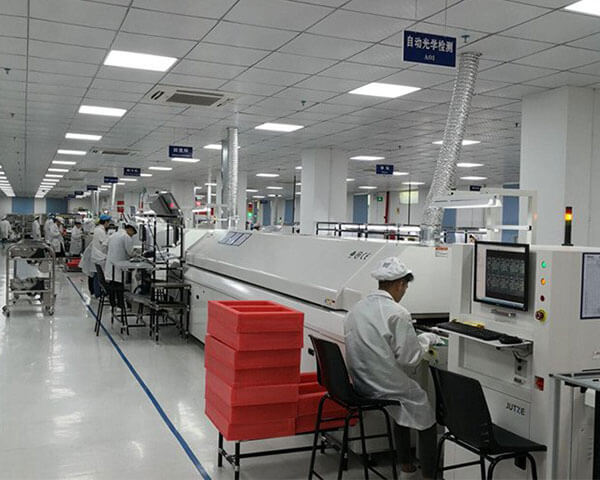Since PCBA assembly processing often involves a variety of static-sensitive electronic components and some processing technologies that have certain requirements for electrostatic protection, certain anti-static requirements must be followed in PCBA processing. Electrostatic warning signs are mainly used for posting, hanging and placing on plants, equipment, components and packaging to warming people to the possibility of electrostatic discharge or electrical overload damage during operation.
Workshop anti-static requirements
According to the requirements of the product production level, the production workshop should be equipped with corresponding anti-static facilities, and the ground wire should be independent and reliable. Maintain constant temperature and humidity in the workshop. Divide the electrostatic safety work area, and affix the obvious anti-static warning signs.
The grounding system outside the workshop is tested once a year, and the grounding system such as the floor and workbench in the workshop is tested once every six months, and corresponding records are made.
The temperature and humidity in the workshop are respectively controlled at (25±2)℃, 65%±5%RH; Measured twice a day and recorded accordingly.

Employee electrostatic protection requirements
When entering the anti-static area, you must wear anti-static work clothes and anti-static shoes according to regulations;
Before touching static-sensitive components, you must wear a grounded wrist strap or grounded foot strap as required, then pass the corresponding static test;
Items that are prone to static electricity are prohibited from being brought into the anti-static area;
The handling, storage and distribution of electrostatic sensitive components must be stored in anti-static packaging;
The anti-static packaging can only be opened after the corresponding anti-static measures have been taken;
Carts and shelves used in anti-static areas must have proper grounding devices;
Anti-static work clothes and work shoes are not allowed to be worn out of the work area, and should be cleaned regularly according to regulations;
The cleaning of the anti-static work surface must use a cleaning agent approved by the electrostatic protection personnel;
Avoid placing static-sensitive components and circuit boards together with plastic products or tools (such as computers and computer terminals);
Connect all tools and machines to ground;
Use electrostatic protection table mats;
Employees without wristbands approach the electrostatic protection workstation;
Immediately report any possibility of causing electrostatic damage.
Precautions during operation
Touch the work surface with both hands before holding the component, so that the static electricity on the hands is transmitted to the ground through the anti-static surface;
Place the device pins down on a surface that dissipates static electricity;
When handling an integrated circuit, hold the body of the integrated block, not the pins;
When operating electronic components, they should be held on the edge of the PCB, and do not directly touch the components or the circuit on the board;
Do not drag or slide electronic components on any surface;
Non-conductors should keep a distance of more than 1m from the electrostatic safe working area;
Only take out the components and circuit boards from the anti-static packaging box in the electrostatic safe work area;
Put static-sensitive components that are not in use temporarily in an anti-static container or in a box;
Minimize handling times.
#PCBA #PCB Assembly #Electrostatic #Printed Circuit Board #Turnkey #SMT #DIP
Want to know more? Contact me at [email protected]. From Lucina



